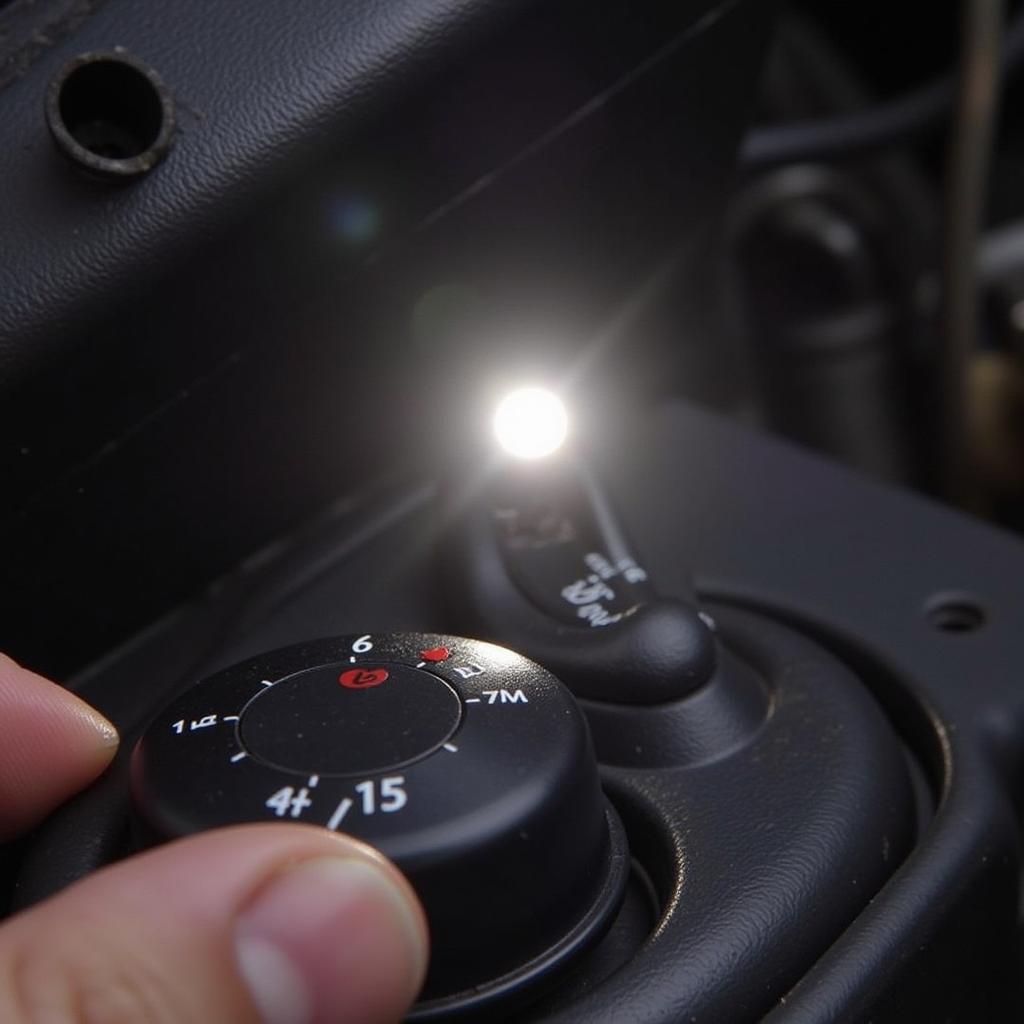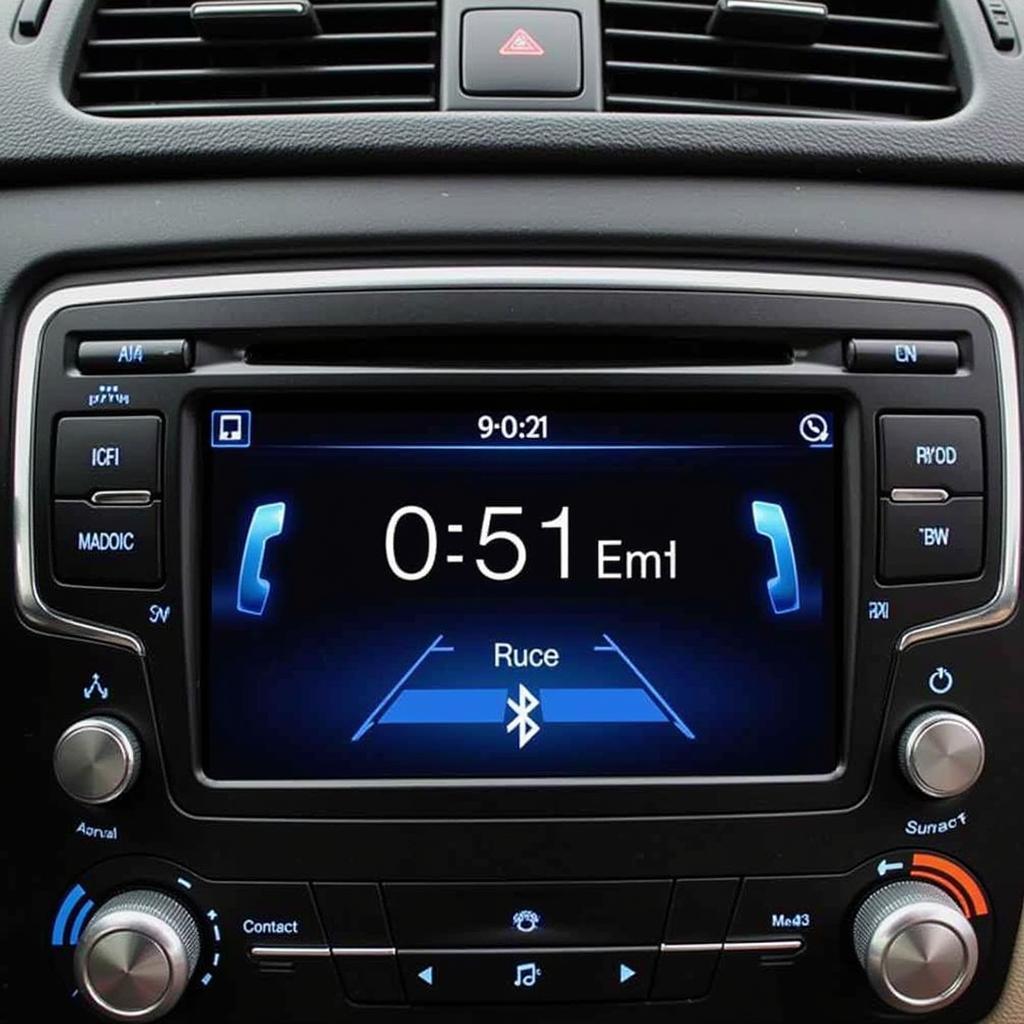When your Volvo displays an AdBlue warning light, it’s a serious issue that requires immediate attention. This warning signifies a problem with the AdBlue system, which is crucial for reducing harmful emissions. This article will guide you through the common causes of this warning, provide effective solutions, and answer your most frequently asked questions.
Understanding the Volvo AdBlue System
AdBlue is a urea-based fluid that’s injected into your Volvo’s exhaust system to break down harmful nitrogen oxides (NOx) into harmless nitrogen and water vapor. This system is essential for complying with stringent emissions standards and plays a crucial role in reducing air pollution.
Common Causes of a Volvo AdBlue Warning
There are several reasons why your Volvo might display an AdBlue warning light. Here are some of the most frequent causes:
- Low AdBlue Level: The most common reason for an AdBlue warning is simply a low fluid level. AdBlue needs to be topped up regularly to ensure optimal system performance.
- AdBlue Sensor Malfunction: The AdBlue sensor measures the fluid level and sends this information to the vehicle’s computer. If this sensor malfunctions, it might trigger a false warning.
- AdBlue Pump Issues: The AdBlue pump is responsible for delivering the fluid to the exhaust system. If it fails, the system won’t function correctly, leading to a warning light.
- AdBlue Injector Problems: The AdBlue injectors are responsible for spraying the fluid into the exhaust. A faulty injector can cause the system to malfunction and trigger a warning.
- Software Glitch: In rare cases, a software glitch might cause an AdBlue warning light even if there’s no actual problem with the system.
Resolving a Volvo AdBlue Warning
Here’s a step-by-step guide to resolve your AdBlue warning:
- Check the AdBlue Level: Begin by visually inspecting the AdBlue tank. If the level is low, simply refill it with the appropriate AdBlue solution.
- Reset the Warning Light: After refilling the AdBlue tank, you might need to reset the warning light. Consult your Volvo owner’s manual or refer to the
[volvo adblue warning light](https://cardiagtech.shop/volvo-adblue-warning-light/)page for specific instructions. - Diagnose the Issue: If the warning light persists, it’s time for a proper diagnosis. A qualified mechanic can utilize specialized diagnostic tools to pinpoint the exact cause of the problem.
- Perform Repairs: Depending on the underlying issue, repairs might involve replacing faulty sensors, pumps, injectors, or addressing software glitches.
Frequently Asked Questions About Volvo AdBlue Warning
What Happens If I Ignore an AdBlue Warning?
Ignoring an AdBlue warning can have serious consequences. If the AdBlue system malfunctions, your vehicle might enter “limp mode,” restricting its performance and preventing you from reaching high speeds. Additionally, neglecting the warning could lead to costly repairs down the line.
How Often Should I Refuel AdBlue?
The frequency of AdBlue refuelling depends on your driving habits and the size of your vehicle’s tank. However, a general guideline is to check the fluid level every 500-1000 miles or when the warning light illuminates.
Can I Use Any AdBlue Solution?
It’s crucial to use only genuine AdBlue solution that meets the specifications outlined in your Volvo owner’s manual. Using incompatible fluids could damage the AdBlue system and void your warranty.
How Can I Prevent AdBlue Issues?
To minimize the risk of AdBlue problems:
- Use High-Quality AdBlue: Always use genuine AdBlue solution that meets the recommended specifications.
- Maintain Regular Fluid Levels: Check the AdBlue level regularly and refill it as needed.
- Avoid Storing AdBlue in Extreme Temperatures: AdBlue can freeze in cold temperatures and degrade in hot weather. Store it appropriately to maintain its quality.
Professional Advice from [Expert Name], Certified Automotive Technician
“AdBlue warnings are a common issue in modern Volvo vehicles. While a low fluid level is often the culprit, it’s essential to get a thorough diagnosis to ensure the underlying problem is properly addressed. Ignoring these warnings can lead to significant inconvenience and costly repairs. It’s always best to consult a qualified technician to ensure a safe and efficient solution.”
Conclusion
A Volvo AdBlue warning is a serious concern that should be addressed promptly. By understanding the potential causes, implementing the recommended steps, and taking preventative measures, you can ensure that your AdBlue system functions optimally and your vehicle performs at its best. If you’re unsure how to proceed, it’s always best to seek professional guidance from a certified automotive technician.



